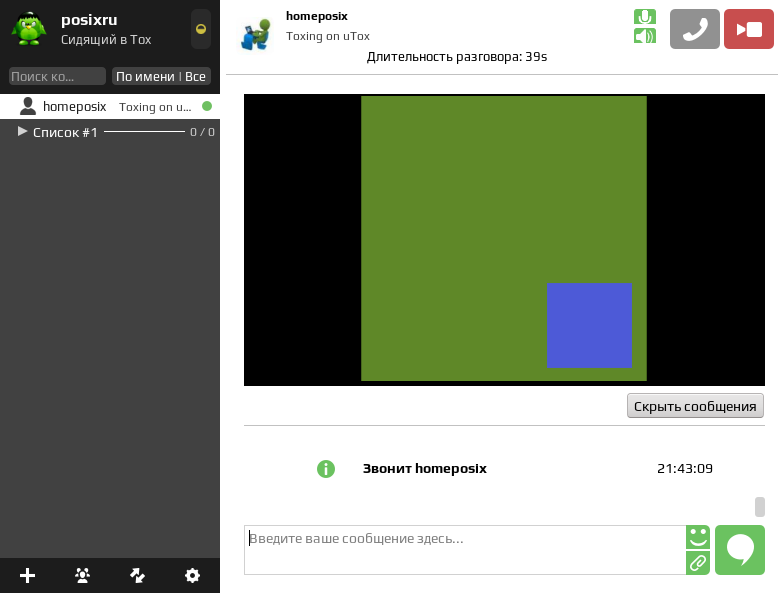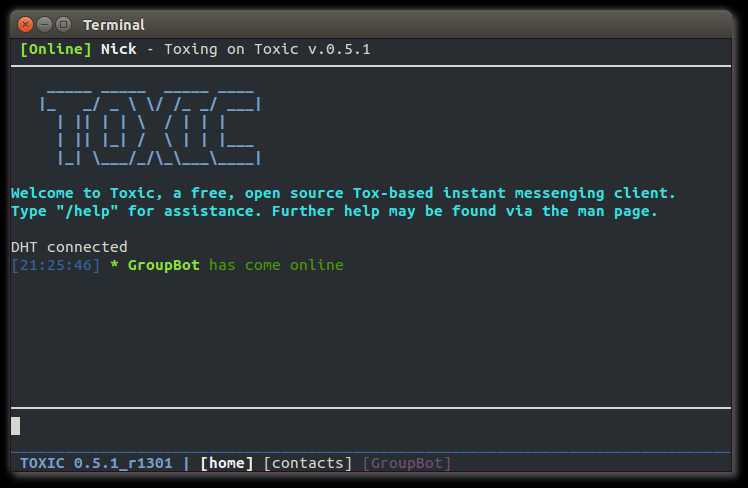

- #TOXCORE QTOX INSTALL#
- #TOXCORE QTOX UPDATE#
- #TOXCORE QTOX CODE#
- #TOXCORE QTOX DOWNLOAD#
- #TOXCORE QTOX FREE#

Settings: Add setting for hiding group join and.Define installer language before trying to access it ( 1353fc93).Build NSIS installer in Unicode mode ( 9f84184b).
#TOXCORE QTOX INSTALL#
#TOXCORE QTOX UPDATE#
Update video API usage for newer libavcodec ( f5fabc2f).macos: update deprecated AVFoundation API ( 484ea7ce).Windows: Correct Program Files directory for 32-bit.
#TOXCORE QTOX CODE#
See also the latest Fossies "Diffs" side-by-side code changes report for "CHANGELOG.md": 1.17.5_vs_1.17.6.Ī hint: This file contains one or more very long lines, so maybe it is better readable using the pure text view mode that shows the contents as wrapped lines within the browser window.
#TOXCORE QTOX DOWNLOAD#
* The clients (using toxcore) have specific names (e.g.As a special service "Fossies" has tried to format the requested source page into HTML format (assuming markdown format).Īlternatively you can here view or download the uninterpreted source code file.Ī member file download can also be achieved by clicking within a package contents listing on the according byte size field. * The implementation of Tox is toxcore - a network library (see ) * Tox is the name of the protocol in general Noise also provides functions to further improve security, like session re-keying, which could also be adopted in Tox. This will remove Noise-C as a dependency (i.e the only other dependency is NaCl/libsodium), reduce source lines of code and therefore reduce the attack surface. In future work, instead of using the Noise-C library, which supports most of Noise’ handshake patterns and all cryptographic primitives, only the Noise protocol used in the Tox handshake will be implemented in c-toxcore. The implementation is currently in proof-of-concept state and will be further improved. The Noise-C library from Rhys Weatherley was used to implement the new AKE in c-toxcore. The Noise protocol used in Tox is Noise_IK_25519_ChaChaPoly_SHA512. Such Noise protocols are already used in some applications, like WireGuard VPN. A handshake pattern is instantiated by DH functions, cipher functions and hash functions to give a concrete Noise protocol. These security properties can include forward secrecy, identity hiding and most notably KCI-resistance. The security properties of these patterns are formally verified. These patterns define a sequence of DH operations to calculate a shared symmetric session key. Noise provides different handshake patterns for different use cases.

The Noise Protocol Framework is intended to use by protocol designers to create secure channel protocols based on Diffie-Hellman (DH) key agreement. The Noise Protocol Framework from Trevor Perrin (co-author of Signal ) was used to design a new KCI-resistant Tox’ handshake.

X25519 key pairs, that are necessary for the distributed hash table (DHT), make an actual KCI-attack more complex as suggested in the initial vulnerability report by Jason A. Furthermore, this would enable this attacker to perform a Man-in-the-Middle (MitM) attack and therefore tampering of exchanged messages. KCI is a vulnerability of AKE protocols, which in this case could enable an attacker, who compromised the static long-term private X25519 key of a Tox user Alice, to impersonate any other Tox user (with certain assumptions) to Alice ("reverse impersonation"). However, we will also present a fix to this vulnerability by designing and implementing a new cryptographic Tox handshake with formally-verified security properties. In this talk we will show why this vulnerability is challenging to exploit in practice. Unfortunately Tox’ authenticated key exchange (AKE) during Tox’ cryptographic handshake is a "home-brewed" cryptographic protocol (remember: do not roll your own crypto!) and is known to be vulnerable to key compromise impersonation (KCI) attacks. The cryptographic primitives for the key exchange (X25519), authentication (Poly1305) and symmetric encryption (XSalsa20) are state of the art peer-reviewed algorithms. Tox’ cryptography is based on the NaCl library from Daniel J. It’s intended as an end-to-end encrypted (E2EE) and distributed Skype replacement.
#TOXCORE QTOX FREE#
Tox is a free and open source peer-to-peer instant messaging protocol and implementation, that aims to provide secure messaging.


 0 kommentar(er)
0 kommentar(er)
